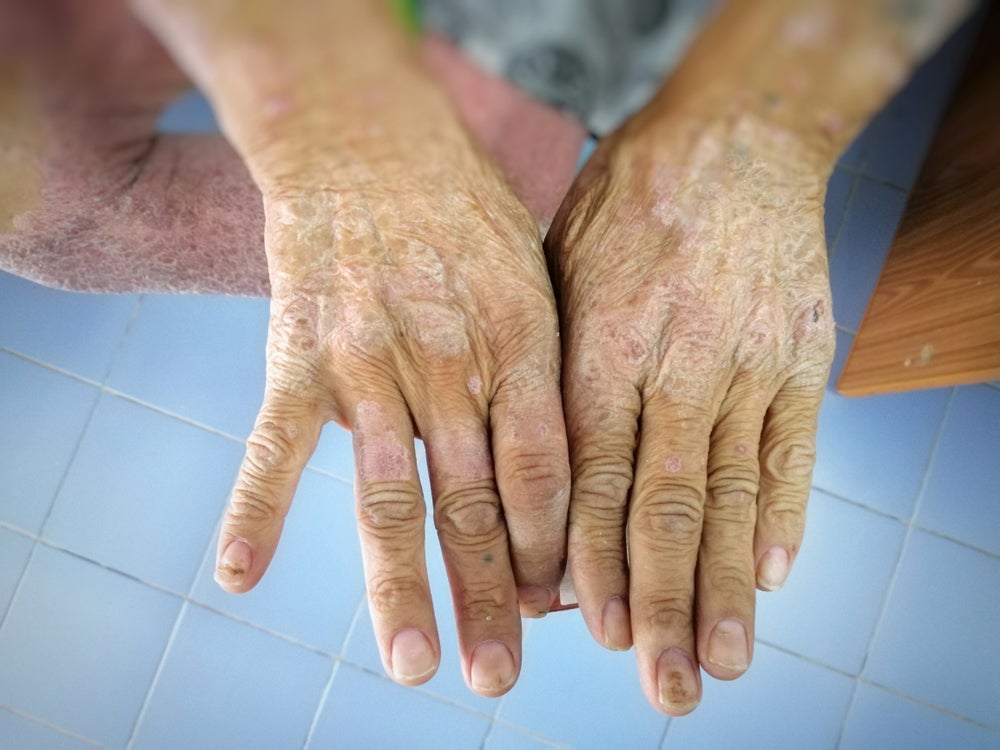World Scleroderma Day occurs every year on 29 June. Its goal is to raise awareness about the disease, its symptoms and treatments. Scleroderma is a rare, progressive and chronic autoimmune connective tissue disorder that causes excess collagen accumulation. Its course can vary from individual to individual, ranging from minor nuisance symptoms to severe multifaceted disease. While there are currently some treatment options available, experimental treatments are also being developed.
Scleroderma is largely characterised by the thickening of skin and fibrosis across multiple organs. It can affect blood vessels and tissue throughout the body and lead to symptoms such as fatigue, arthralgia, myalgia and the Raynaud phenomenon [decreased blood flow to the fingers, resulting in coldness or numbing, which can sometimes also affect other parts of the body]. Scleroderma can impact the skin, lungs, heart, kidneys and gastrointestinal tract.
Malnutrition is a common symptom due to diminished nutrient absorption
At present there are several approved treatments, including bosentan, nintedanib, and tocilizumab, to help manage the symptoms of scleroderma, but there is no cure. There are more treatment options in the pipeline, but patient lifestyle can also have an impact on how the disease impacts. Lifestyle choices can have a big impact on overall health and chronic disease prevention. Diet and physical activity can support normal growth, development and aging, and aid in maintaining a healthy body weight. Malnutrition is a common symptom in scleroderma patients and can be a result of diminished nutrient absorption due to gastrointestinal complications.
In addition to lifestyle changes, there are experimental treatments currently in development for scleroderma. One potential treatment currently in the pipeline is CM-101 by Chemomab Therapeutics, a first-in-class humanised monoclonal antibody. Paracrine Inc has received FDA approval to conduct a pivotal trial using adipose-derived regenerative cells for the treatment of hand dysfunction in patients with diffuse cutaneous scleroderma.
Early diagnosis of scleroderma is also important. With a diagnosis, patients can begin treatment and lifestyle changes that will ultimately help manage pain and symptoms. To diagnose scleroderma, there are several physical and diagnostic tests. Physical examinations can be done to help reveal characteristic signs of the disease, such as thickening of the skin, especially in the face and hands. Diagnostic tests that are needed include blood tests, skin biopsy, imaging, lung function tests and nail fold capillaroscopy.
Understanding the symptoms and treatment options is an important part of World Scleroderma Day, and raising awareness will help people know when to seek medical care and that treatment options are available.
How well do you really know your competitors?
Access the most comprehensive Company Profiles on the market, powered by GlobalData. Save hours of research. Gain competitive edge.

Thank you!
Your download email will arrive shortly
Not ready to buy yet? Download a free sample
We are confident about the unique quality of our Company Profiles. However, we want you to make the most beneficial decision for your business, so we offer a free sample that you can download by submitting the below form
By GlobalData




